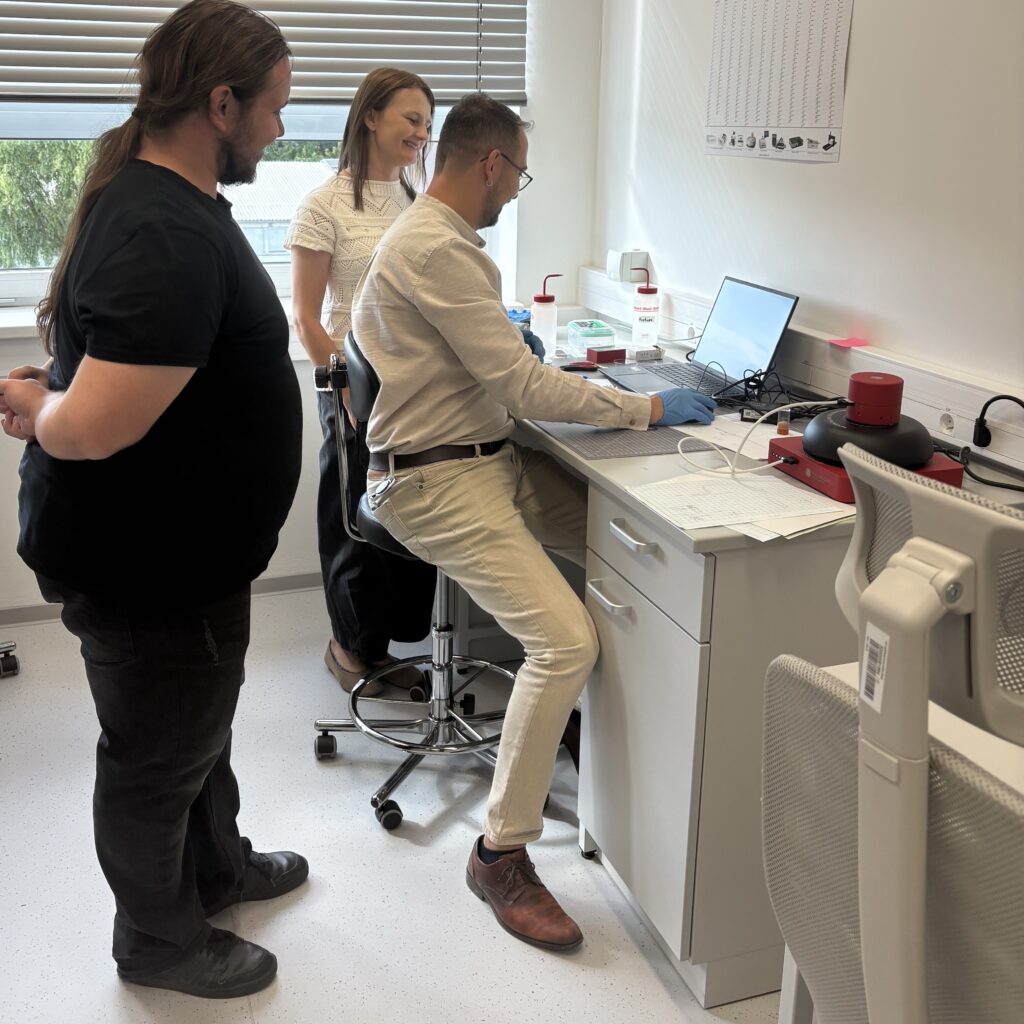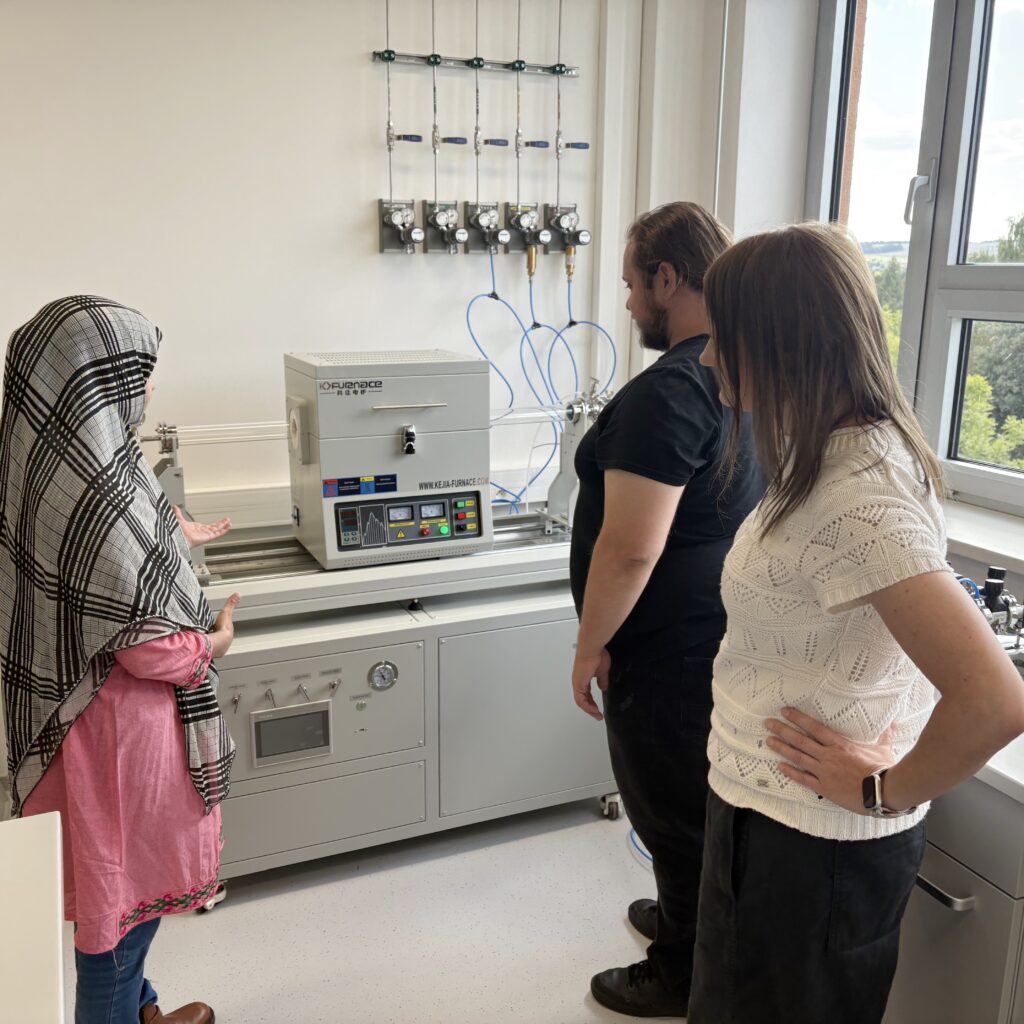Paweł Wróbel, an expert in nanomaterials and gas sensing working among others at the Polish Academy of Sciences, visited EBEAM in August to give an invited talk “Nanomaterials as a suitable platform for gas sensing technology”. With representatives of EBEAM he also discussed collaboration projects. He had a tour of the EBEAM laboratories and facilities as well.
Gas sensing research has long stood at the intersection of multiple disciplines, encompassing materials science, surface chemistry, and device engineering. Since the advent of graphene and the broader emergence of nanomaterials, these low-dimensional systems have become central to sensor development owing to their high specific surface area, tunable electronic characteristics, and rich surface chemistry. In this context, carbon-based nanostructures—such as graphene oxide and carbon nanotubes—have proven to be versatile platforms for investigating the relationship between structural modifications and sensor performance.


His talk presented insights from his research on carbon nanostructures, with a focus on how their chemical and morphological properties influence the functional behaviour of active layers in chemiresistive gas sensors. Particular emphasis was placed on the interplay between nanoscale architecture and sensing response. Finally, he briefly introduced transition metal carbides as a promising avenue for future exploration in gas sensor design.

